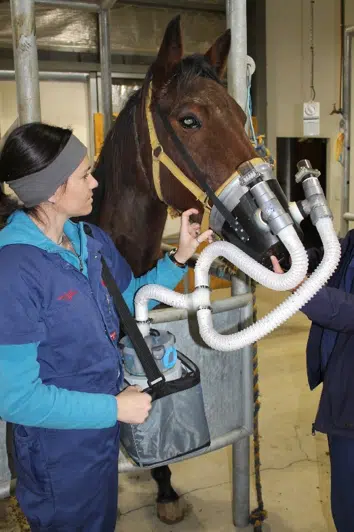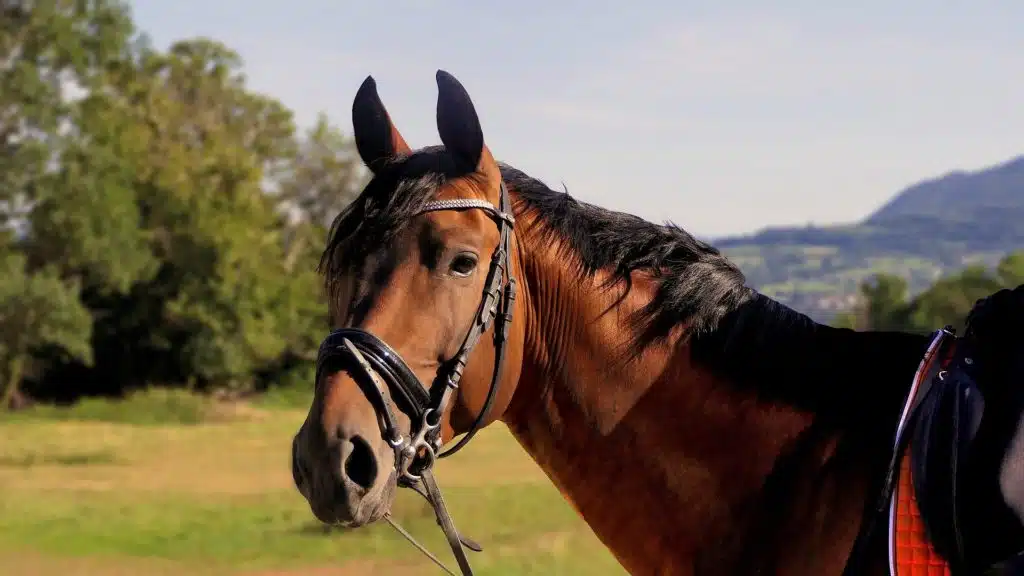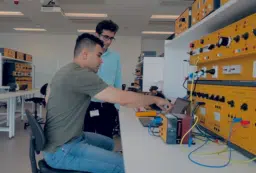Detecting asthma in horses
Using a face mask, Adelaide researchers have a new way to detect a major hidden equine health issue.

Up to 80 percent of horses – including racehorses and showjumpers – suffer from a form of asthma that affects their performance and wellbeing.
Researchers led by veterinarian Surita Du Preez from the University of Adelaide are designing a way to detect the condition – which often produces no obvious symptoms – without adding further stress to the affected animals.
“Currently the methods that are available to diagnose the mild to moderate form of horse asthma are invasive,” says Surita.
“They also don’t allow accurate monitoring of the response to treatment. We’re working on a new approach which uses a face mask. This allows us to make a diagnosis by analysing the condensated breath from the horse.”
Breath exhaled into the mask is passed through a condensation chamber to allow sample acquisition.
The pH and hydrogen peroxide can then be measured. These two factors function as markers for oxidative stress and inflammation – key clues to the presence of asthma.
“Equine asthma is a big hidden cost for horse owners,” says Surita.
“It means racehorses don’t win and showjumpers don’t get clear rounds because they are not in peak condition.
“We hope that by developing this process we’ll be able to quickly and easily identify horses likely affected by equine asthma and so improve the health of many horses – and save their owners a lot of money.”

Further reading:
Du Preez, S., Raidal, S.L., Doran, G.S., Nielsen, S.G., Hughes, K.J. (2017). The consistency and influence of environmental and animal factors on exhaled breath condensate hydrogen peroxide, pH and leukotriene B4 in horses. The Veterinary Journal, 226, 46–50, doi.org/10.1016/j.tvjl.2017.07.005
Du Preez, S., Raidal, S.L., Doran, G.S., Prescott, M., Hughes, K.J. (2019) Exhaled breath condensate hydrogen peroxide, pH and leukotriene B4 are associated with lower airway inflammation and airway cytology in the horse. Equine Veterinary Journal, 51(1), 24-32. doi.org/10.1111/evj.12979
Photo by Pixabay





 Fresh Science is on hold for 2022. We will be back in 2023.
Fresh Science is on hold for 2022. We will be back in 2023.